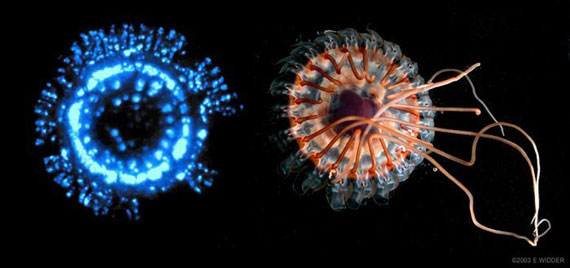Palm Oil is Causing Mass Deforestation, Killing Animals – and It’s Making Us Sick
I recently watched a fascinating new documentary film called, “Appetite for Destruction: Palm Oil Diaries.” In it, filmmaker Michael Dorgan journeys around the world to discover the impact that the dramatic increase in palm oil production is having on the countries that produce it, and more broadly the impact palm oil has on us – the people consuming it on a daily basis.
It’s well documented that Conflict Palm Oil production is terrible for human rights, forests, and the climate. The big question remains: why is it in 50 percent of packaged foods at the grocery store? And what is the impact for those that eat it on a daily basis? Is palm oil even healthy for us?
The massive global increase in palm oil in production and consumption has been driven in large part by health concerns in Western countries. As more information became available about the health effects of certain types of fat, food manufacturers have sought replacements for animal fats, which are high in cholesterol, and partially-hydrogenated oils, which are high in trans fats. U.S. imports alone have skyrocketed, climbing 352 percent between 2002 and 2012, the most recent year for which data is available. Palm oil, now the most widely used vegetable oil in the world, is commonly used as a substitute for oils containing trans fats.
The U.S. Food and Drug Administration’s (FDA) move to ban trans fat has increased demand for palm oil but is palm oil a good alternative for human health and the environment?
In June of 2015, the FDA announced a ban on the use of partially hydrogenated oils, the main dietary source of artificial trans fats, after determining they are not safe to use in food. Since then, the ban on trans fats has had hugely negative and unintended consequences on the global demand for palm oil. The environmental and health alarm bells around substituting palm oil for trans fat have been sounding in the years since the FDA’s move, but now there is sobering new evidence that should be a wake-up call.
Appetite for Destruction reveals some very troubling new evidence linking palm oil to major health problems.
New Evidence Shows Consumption of Palm Oil Threatens Human Health
Appetite for Destruction features the filmmaker, Michael Dorgan, participating in a groundbreaking new experiment, led by a group of Swedish scientists, in which they compare eating muffins containing large amounts of palm oil to eating muffins with an equal amount of sunflower oil each day. The relative impact on human health is surprising.
In the film, Michael has a healthy 4.6 percent body fat when he starts the experiment. Just a few weeks into the study, after eating palm oil every day, his body fat jumps to 7.4 percent (nearly doubled), which adds two kilograms of fat to his body and results in a kilo of muscle loss.
Leaving Sweden and traveling home to the UK, Michael visits a cholesterol specialist named Dr. Linda Mane. Through blood work, Dr. Mane finds that his total cholesterol went up (including HDL and triglycerides) following the experiment. In the film, Dr. Mane tells him, “…Raised blood fats and cholesterol is a key risk factor for coronary heart disease, which is the biggest killer worldwide today. Palm oil is one of the key saturated fats that we know [of which] raises blood cholesterol, and hidden in many packaged foods, we don’t know it’s there unless we’re really skilled at looking at food labels.”
So what do these changes ultimately mean for Michael’s health? The scientists concluded that if Michael kept up similar palm oil consumption patterns, he could be at risk of developing metabolic disease, liver disease, or cardiovascular disease. Palm oil increased the amount of fat stored around his liver and in his abdomen in particular, as well as his total body fat. According to the scientists, eating sunflower oil could actually prevent these risky increases.
With this new study and others, it turns out palm oil and red meat may be two of the biggest contributors to health problems in the American diet. And that’s not all they share. These two commodities also have some of the largest climate and tropical forest footprints of any commodity.
Health Experts Conclude That Palm Oil is NOT Good for Human Health
This latest experiment by Swedish scientists confirms the findings of other leading health institutions like The World Health Organization, the National Heart, Lung and Blood Institute, the National Institute of Diabetes and Digestive and Kidney Diseases, and the USDA Agricultural Research Service. In 2014, Dr. Weil joined a chorus of leading health experts as well. Their conclusion?
Palm oil may be a good industry substitute for trans fats as it stays solid at room temperature without hydrogenation, but it isn’t actually a healthier alternative: A 2009 study by the federal Agricultural Research Service found that palm oil isn’t a good substitute for trans fats because consuming either type of fat results in similar spikes in artery-clogging LDL (“bad”) cholesterol and a protein (apolipoprotein B) that distributes it throughout the bloodstream.
Red palm oil is less refined than conventional palm oil or palm kernel oil, which does keep some of the micronutrients intact – specifically Vitamin E, Vitamin A and carotenoids (which give it its color). But if you’re eating for these specific nutrients, palm oil isn’t an ideal choice because it’s so high in saturated fats. If you’re trying to increase your Vitamin E, A or carotenoids, it is better to eat fruits, vegetables, seeds, and nuts. Hear it from our nation’s expert dietitians themselves.
So Why is Palm Oil in “Natural Food” Products if it’s Not Healthy?
If health experts agree that palm oil is no better for our health, and the fat that Michael and others in the film’s experiment gained from eating palm oil was concentrated in dangerous places in the body – like around the liver and vital organs – and can lead to coronary heart disease (which is the biggest killer worldwide today), why is palm oil such a ubiquitous ingredient in “health food” products?
The palm oil industry’s most die-hard advocates suggest that palm oil is perfectly healthy. Take, for example, the Malaysian Palm Oil Council, which suggests that palm oil is “comparable to the much touted gold standard olive oil for its effects on blood cholesterol.” Or, American talk show host Dr. Oz who went on air telling millions of viewers to “give palm oil a try for its incomparable nutritional virtues.” He goes as far as calling it a “miracle oil.” Other than being schils for the palm oil industry, what do these two groups have in common? They are the only ones who actually believe palm oil is healthy.
Solution: Transform the food system with RAN
“Health washing” is nothing new in the food business. As consumers become more educated about the negative effects our food system has on the health of people and the planet, they are moving away from packaged, processed foods and soft drinks. Snack Food companies are well aware of this. In fact, the snack food industry’s greatest threat is the emerging health trend – it hurts their bottom line. Executives, like Al Carey of PepsiCo, who express concern about the growing health trend say this means companies have to innovate and expand into new markets or else risk losing a substantial amount of business.
As we see in Michael Dorgan’s Appetite for Destruction, and given the environmental destruction caused by palm oil production, palm oil is neither healthy for our bodies nor the planet. To transform our food system, we must transform the palm oil industry. Join RAN’s campaign to demand that the biggest global snack food companies cut their ties between the products they sell and deforestation, climate change, human rights abuses and species extinction.
http://www.onegreenplanet.org/environment/palm-oil-is-making-us-sick/
















